An engine is a device that converts some form of energy into mechanical energy to help drive a working machine or other mechanical equipment. On all types of transportation up to now, this is the main source of power for all activities. There are many types of engines used such as external combustion engines, internal combustion engines, jet engines, electric motors... but the most commonly used is the internal combustion engine, especially in cars. modern.
Internal combustion engines are divided into many types based on the fuel used or the structure of the engine... Their structure is relatively complex, to be able to operate smoothly, they need many systems to work together. together. In this article, let's learn about the basic structure of an internal combustion engine and what systems it will include.
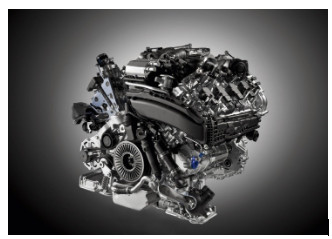
Figure 1. Internal combustion engine
This is considered the frame of the internal combustion engine, composed of details such as: engine body, engine cover, trigger cover, crankcase, gasket, intake manifold, exhaust manifold... The fixed system accounts for the majority of the block. of the engine, it functions as a frame used to assemble other mechanisms and systems of the engine. The engine cover, engine body and piston form the engine's combustion chamber. The shape and structure of the details in the fixed system depend on the engine capacity, engine cooling type or manufacturing method...
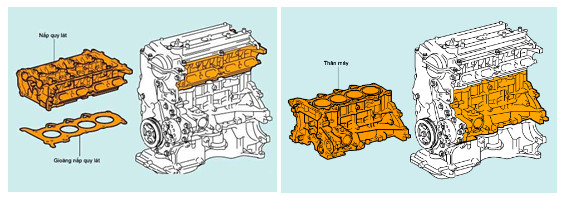
Figure 2. Machine cover – Figure 3. Camera body
The power generation system includes details such as: piston, crankshaft, connecting rod, flywheel, piston rings, piston pin, silver... Responsible for receiving force from the fuel-air combustion process, transforming motion The translation of the piston into rotation of the crankshaft and flywheel drives other mechanisms and systems on the engine and car. The piston, along with the engine cover and cylinder, forms the combustion chamber, while the piston rings are responsible for sealing the engine's combustion chamber and carrying lubricating oil to the cylinder wall.
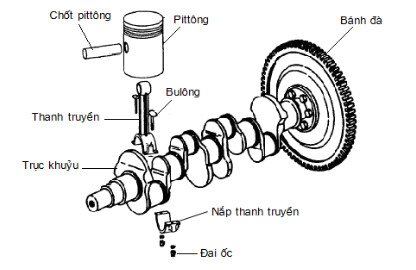
Figure 4. Force generation system
The air distribution system, also known as the air distribution mechanism, has the function of opening and closing the valves rhythmically to help the engine's intake and exhaust process take place at the right time according to the engine's working cycle: fill with air. or mix air in the intake stroke and remove combustion gases in the exhaust stroke. The system structure includes main details such as: valve, spring, camshaft, stop cup, horseshoe, cam gear, drive belt/chain...
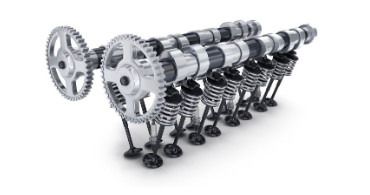
Figure 5. Gas distribution system
There are many types of air distribution systems such as: OHV (Overhead Valves: the valve is placed on the engine cover while the camshaft is mounted on the engine body); SOHC (Single Overhead Camshaft: single camshaft located on the engine cover); DOHC (Dual Overhead Camshaft: double camshaft placed on the engine cover)... In addition, in modern engines the air distribution system is also equipped with variable cam technology, also known as smart cam such as: VVT-I (Toyota), VTEC (Honda), MIVEC (Mitsubishi)... help change the angle and timing of valve opening and closing, increasing the efficiency of filling and exhausting the engine.
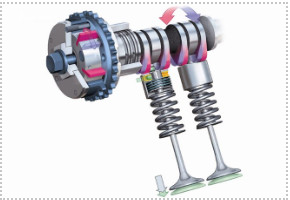
Figure 6. Air distribution system using variable cam
As the name suggests, this system has the function of providing the correct and sufficient amount of fuel for the engine to operate. It is divided into two types corresponding to the two types of internal combustion engines commonly used in cars: gasoline fuel system and diesel fuel system.
There are many types of gasoline fuel systems, such as: using carburetor (carburetor), indirect fuel injection (SPI, MPI), direct fuel injection (GDI)... Basic structure of the fuel system includes parts such as: fuel tank, fuel pump, fuel filter, pressure regulator, injectors, fuel pipes...
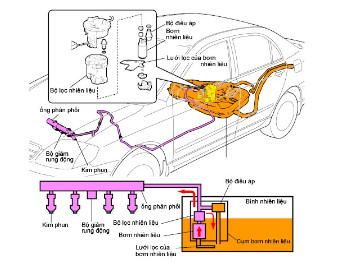
Figure 7. Gasoline fuel system
The diesel fuel system is composed of: diesel tank, supply pump, high pressure pump, diesel filter, pressure bar, injector... Unlike gasoline engines, diesel engines are self-igniting engines so The fuel needs to reach high pressure before being injected into the combustion chamber. Therefore, the high pressure pump is an indispensable detail. High-pressure pumps are commonly used and divided into two types: series pumps (PE) and distribution pumps (PP).
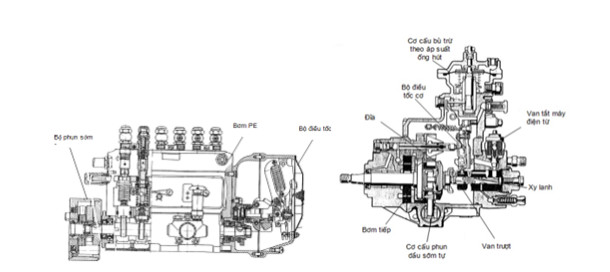
Figure 8. Series pump & Distribution pump
On modern diesel engines today, the Common rail diesel fuel system is increasingly used to help improve engine performance and reduce emissions.
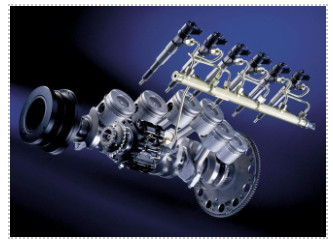
Figure 9. Common rail diesel fuel system
When the internal combustion engine operates, there will be friction between the surfaces of metal parts causing wear. The lubrication system is responsible for minimizing that friction and wear, while helping the engine operate smoother by providing lubricant to the friction surfaces. The lubrication system is an important system that affects the longevity and performance of the engine. When the lubrication system is damaged or clogged, lubricating oil cannot reach the friction surfaces, causing silver stripping and engine binding. The system's structure includes: oil crankcase, oil pump, oil filter, oil cooler...
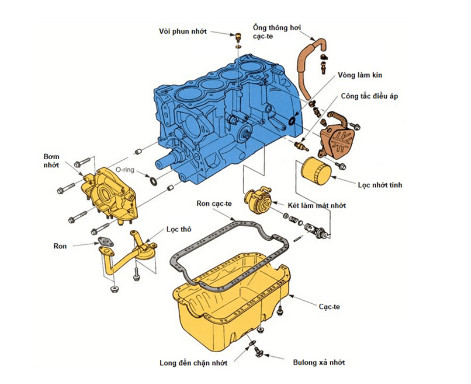
Figure 10. Lubrication system
During operation of the internal combustion engine, heat will be generated, so it is necessary to have a system that takes on the role of cooling the engine, keeping the engine temperature always within the most optimal range. To do that, the cooling system needs parts such as: water pump, fan, thermostat, cooling tank, radiator cap, auxiliary water tank... to help circulate water in the water jacket to cool the engine. engine.
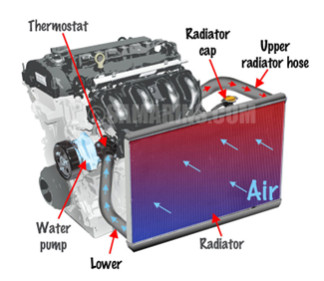
Figure 11. Cooling system
The basic engine electrical system usually includes parts such as: starter (starter), generator (dynamo) and ignition system (in gasoline engines).
The starter, also known as the starter, has the function of starting the engine.
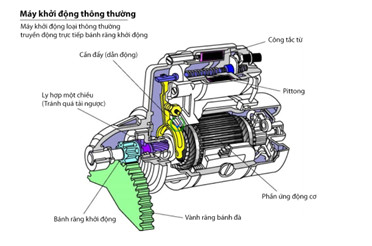
Figure 12. Starter (starter)
The generator (dynamo) acts as a power source for the entire car when the engine is started and recharges the battery.
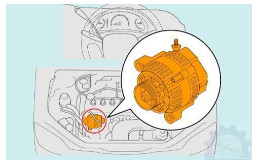
Figure 13. Generator location on the engine
The ignition system is made up of many details depending on the type, basically including: bobbin, control IC, spark plug... It has the function of providing spark to each cylinder at the right time at the end of compression - the beginning of explosion, Burning fuel produces work for the engine.
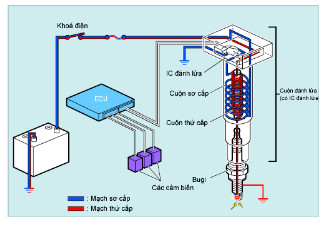
Figure 14. Direct ignition system (DIS)
To improve intake efficiency as well as better exhaust gas treatment to ensure compliance with environmental protection emissions standards, the engine needs to have an "8th system" which is the intake - exhaust system.
Turbo chargers and Super chargers are increasingly used to help with compression when entering the cylinder. The Turbo charger uses energy from the exhaust gas while the Super charger is driven directly from the crankshaft pulley.
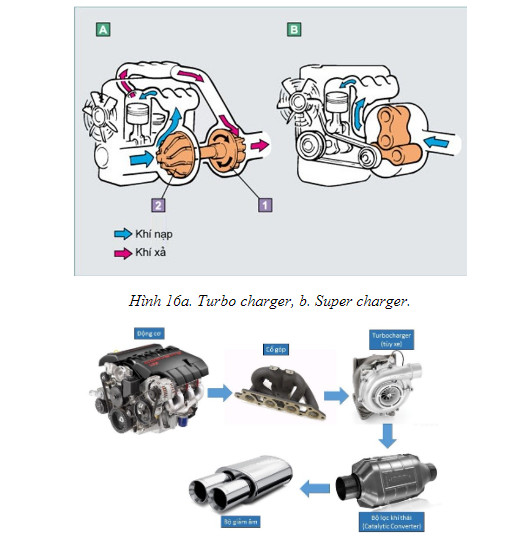
Figure 15. The exhaust system uses a Catalytic Converter to treat exhaust gases
Above are the most basic systems to constitute an internal combustion engine. With increasingly developing technology, systems are gradually upgraded and supplemented to meet emission standards, improve engine performance and capacity, and reduce fuel consumption. But basically, an internal combustion engine must have all the above systems.
THANH PHONG AUTO
Company hotline:
Customer Service Center: 0789 86 27 27 - 0931 79 77 90
Cars Care Service Price Sheet At Thanh Phong Auto HCMC VietNam:
* The cars that we have mechanics: Mercedes, BMW, Audi, Lexus, Toyota, Honda, Mazda, Mitsubishi, Kia, Daewoo, Hyundai,Ford, Nissan, Volkswagen, Porsche, Chevrolet, Rand Rover, Innova, Fortuner, Vios, Fiat, Bugatti, Ferrari, Bentley, Hummer , Chrysler, Dodge, Renault, Cadillac, Volvo, Subaru, Daihatsu, Ssangyong, Roll-Royce, Peugeot, Smart Fortwo, Tobe M'car, Luxgen, Zotye, Haima, Geely, Baic, Hongqi, Cmc, Mini Cooper, Buick, Opel, Acura, Aston Martin, Vinfast, TQ Wuling.
To keep your vehicle running properly at all times, we offer a number of services that are carried out by our certified, expert auto service and repair technicians who have years of experience performing everything from oil changes to a complete engine overhaul.